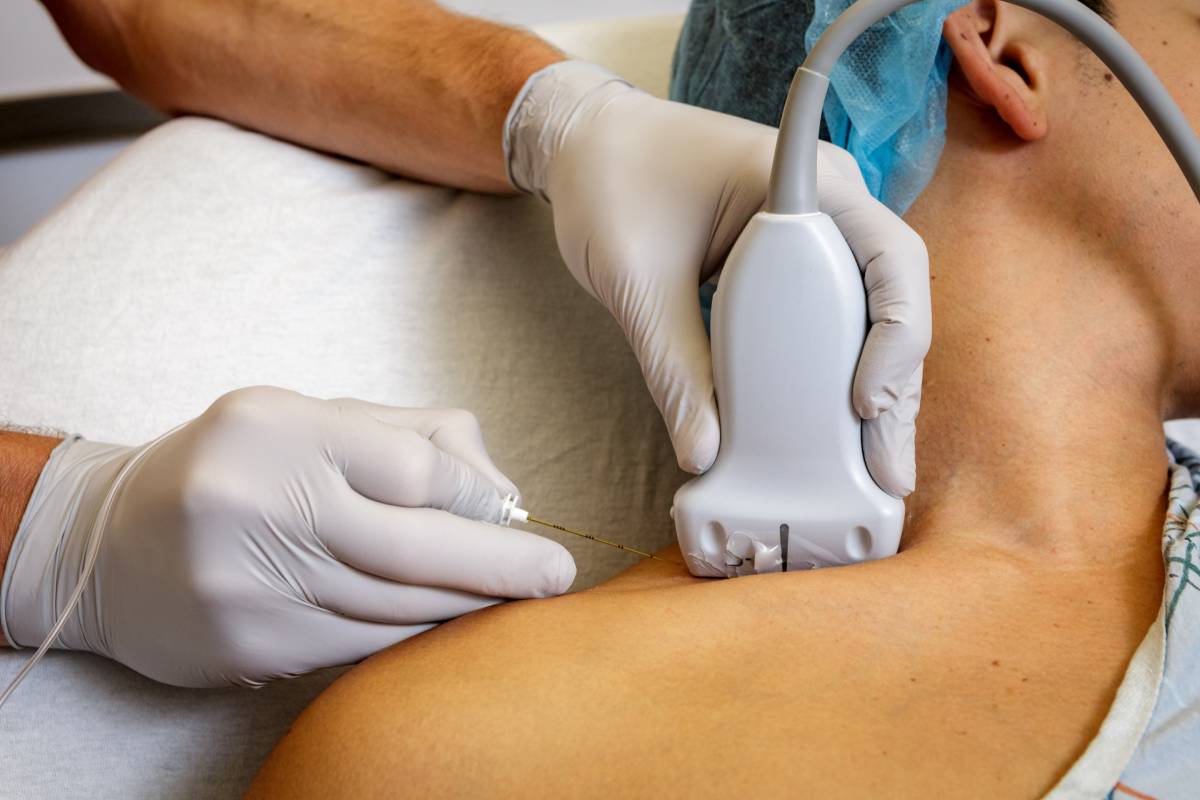Chronic joint pain plagues millions worldwide and can significantly impact a patient’s quality of life. Identifying the exact source of joint pain can be challenging, which then makes it challenging to provide a definitive intervention rather than treat symptoms. Nerve blocks are a useful tool for treating pain, but they have also recently emerged as a diagnostic tool in the realm of pain management, providing insights into the origin of pain and offering targeted treatment options. It is therefore necessary to assess the accuracy of nerve blocks for these functions.
One application of nerve blocks is in the diagnosis and treatment of chronic low back pain. Low back pain is the most common cause of disability around the world1. There are many management options, but because it is often difficult to pinpoint a specific etiology of the pain, these options can be suboptimal1. Studies have shown that facet joints are a potential source of low back and referred pain3. Radiographic imaging of the facet joints for diagnostic purposes has been shown to be low-yield, and clinical exam is similarly nonspecific3. These joints are surrounded and innervated by nerves, and thus it is possible to use local anesthetic for a local nerve block for diagnostic and therapeutic purposes. When examining the accuracy of nerve blocks for this purpose, research has found that single blocks have a high false positive rate, however, dual blocks have a specificity of 88%6. This means that pain relief with a dual block is a reasonably accurate diagnostic indicator of facet joint pain. To improve the false positive rate due to the placebo effect, controlled dual blocks can be delivered through fluoroscopic guidance, or ultrasound if fluoroscopy is not available1.
Osteoarthritis-related knee pain, like back pain, is an extremely common problem that greatly limits quality of life, especially in the elderly. While total-knee arthroplasty is the most definitive treatment that exists for osteoarthritic knee pain, up to 44% of patients that undergo this surgery report persistent knee pain4. Many patients are also poor candidates for surgery, and may choose to treat their pain conservatively4. NSAIDs are a popular choice for conservative treatment, but they have a variable and often limited efficacy, however, in treating this pain4. Genicular nerve blocks with radiofrequency ablation, aimed at interrupting sensory nervous connections in the knee, has emerged as a novel therapy4. Since this therapy is relatively new, the best technique is still being elucidated. However, one 2019 study has shown that delivery of genicular nerve blocks with radiofrequency ablation has reasonable accuracy when done with fluoroscopic guidance using the knee’s bony landmarks4. This technique does expose the provider and patient to fluoroscopy radiation, however, and the efficacy of these blocks is still being studied today4.
The most sensitive and specific application of nerve blocks as a diagnostic and therapeutic tool thus far is in the treatment of frozen shoulder5. Hydrodilation of the glenohumeral joint with suprascapular nerve block is a common treatment modality for frozen shoulder, usually after failure of medication therapy5. This modality is reasonably accurate as well; 72.5% accuracy when the nerve block is guided by bony landmarks, and 92.5% accuracy with ultrasound-guided injection2. When done correctly, studies have shown that patients with frozen shoulder, especially intractable frozen shoulder, can experience significant pain relief and return to a normal range of motion2.
Nerve blocks have many applications in the treatment of joint pain. With more studies to optimize efficacy and accuracy, nerve blocks may become more and more commonly performed, especially in lieu of more invasive treatment options.
References
- Boswell MV, Manchikanti L, Kaye AD, Bakshi S, Gharibo CG, Gupta S, Jha SS, Nampiaparampil DE, Simopoulos TT, Hirsch JA. A Best-Evidence Systematic Appraisal of the Diagnostic Accuracy and Utility of Facet (Zygapophysial) Joint Injections in Chronic Spinal Pain. Pain Physician. 2015 Jul-Aug;18(4):E497-533. PMID: 26218947.
- Debeer P, Commeyne O, De Cupere I, Tijskens D, Verhaegen F, Dankaerts W, Claes L, Kiekens G, 2021. The outcome of hydrodilation in frozen shoulder patients and the relationship with kinesiophobia, depression, and anxiety. Journal of Experimental Orthopaedics 8.. https://doi.org/10.1186/s40634-021-00394-3
- Falco FJ, Manchikanti L, Datta S, Sehgal N, Geffert S, Onyewu O, Singh V, Bryce DA, Benyamin RM, Simopoulos TT, Vallejo R, Gupta S, Ward SP, Hirsch JA. An update of the systematic assessment of the diagnostic accuracy of lumbar facet joint nerve blocks. Pain Physician. 2012 Nov-Dec;15(6):E869-907. PMID: 23159979.
- Fonkoue L, Behets CW, Steyaert A, Kouassi JEK, Detrembleur C, De Waroux BLP, Cornu O, 2019. Accuracy of fluoroscopic-guided genicular nerve blockade: a need for revisiting anatomical landmarks. Regional Anesthesia & Pain Medicine 44, 950–958.. https://doi.org/10.1136/rapm-2019-100451
- Prasetia R, Albana R, Herman H, Lesmana R, Chernchujit B, Rasyid HN, 2022. Ultrasound-Guided Suprascapular Nerve Block at Spinoglenoid Notch and Glenohumeral Joint Hydrodilation. Arthroscopy Techniques 11, e1233–e1238.. https://doi.org/10.1016/j.eats.2022.03.009
- Ragesh MB., Chamma R., Ranganathan A. 2019. Management Strategies in Chronic Lumbar Facet Joint Pain Syndrome – A Review of Literature/
